Keoladeo National Park, located in Bharatpur, Rajasthan, is one of the world’s most renowned bird sanctuaries. Originally created as a hunting ground for Maharajas, it is now a UNESCO World Heritage Site. Covering an area of approximately 29 square kilometres, Keoladeo is a vibrant mosaic of dry grasslands, woodlands, wetlands, and swamps, attracting over 370 species of birds. This park is a major wintering ground for migratory birds, such as the endangered Siberian crane. With its diverse flora and fauna, Keoladeo offers an extraordinary experience for birdwatchers, wildlife enthusiasts, and nature lovers alike.
Keoladeo National Park Location
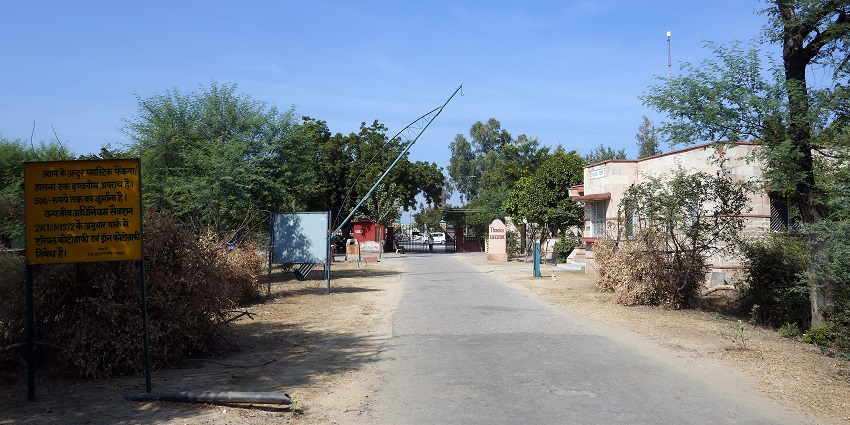
Photo: Ji-Elle / Wikimedia Commons
Keoladeo National Park is located in Bharatpur, about 55 kilometres from Agra and 180 kilometres from Jaipur. Its strategic location on the Bharatpur-Jaipur highway also connects it to major tourist circuits, including the famous Golden Triangle (Delhi-Agra-Jaipur).
Suggested Read: Places To Visit Near Bharatpur
How To Reach Keoladeo National Park
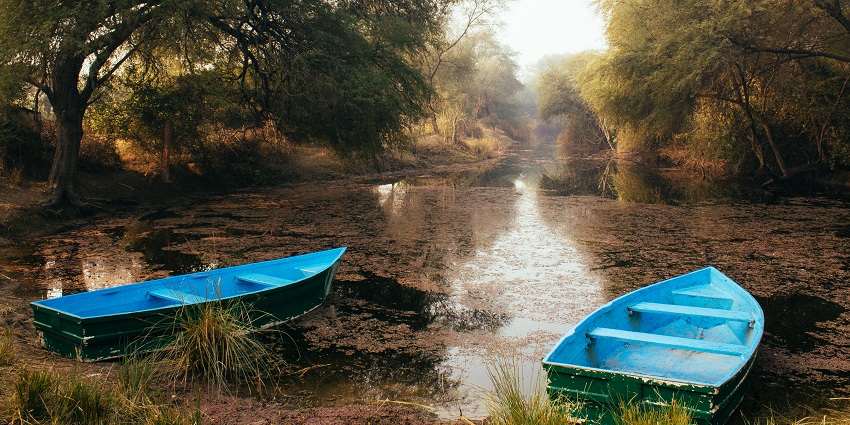
Photo: Advay mehta / Wikimedia Commons
By Air: The nearest airport to the national park is Agra’s Kheria Airport, approximately 55 km away. Alternatively, Jaipur International Airport is about 180 km from the park. Taxis and buses are available for transportation to Bharatpur from either airport.
By Train: Bharatpur Junction is the closest railway station to the park, only 5 km away. Regular trains connect Bharatpur to major cities like Delhi, Jaipur, and Agra. From the station, visitors can take an auto-rickshaw or taxi to reach the park.
By Road: The national park is well connected by road. It is situated on the NH11 highway, which links Bharatpur to Jaipur and Agra. State-run and private buses ply regularly between these cities and Bharatpur. Visitors can also hire taxis for a more comfortable journey.
Places To Visit In And Around Keoladeo National Park
Discovering diverse birdlife to its scenic wetlands and historical significance, Keoladeo National Park offers a variety of experiences for nature lovers and history enthusiasts alike.
1. Keoladeo Temple
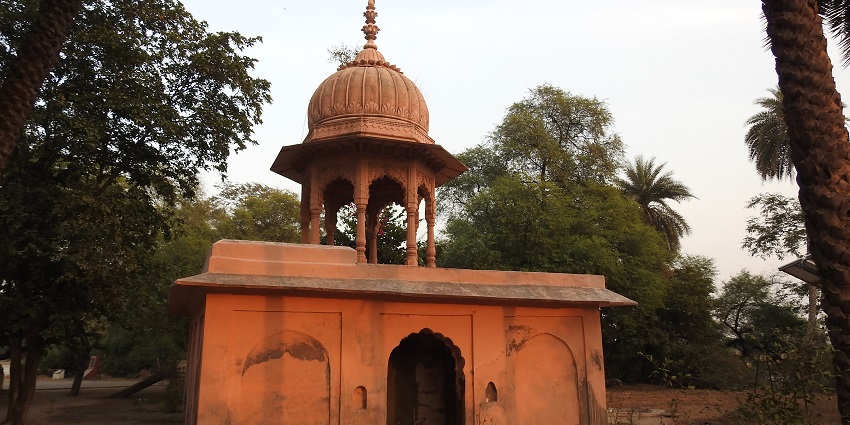
Photo: Dr. Raju Kasambe / Wikimedia Commons
The Keoladeo Temple, from which the park derives its name, is a small but significant temple located within the sanctuary. Dedicated to Lord Shiva, it serves as both a spiritual centre and a resting spot for visitors during their park explorations. Surrounded by greenery and offering a serene ambience, the temple attracts those interested in a peaceful retreat. Visitors often pause here for meditation or relaxation while enjoying the view of the surrounding wetlands.
Timings: 24*7
Entry Fee: Included in park entry
Suggested Read: Places To Visit In Bharatpur
2. Birdwatching Points
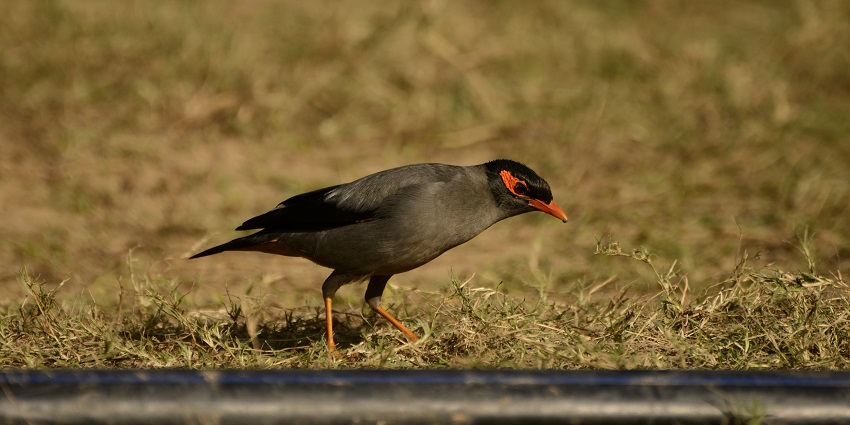
Photo: PJeganathan / Wikimedia Commons
Ghana National Park is a haven for birdwatchers, and several designated birdwatching points allow visitors to observe the park’s vibrant birdlife. Some of the most sought-after species include the Siberian crane, painted stork, and Indian cormorant. Visitors can either walk or cycle through these areas or hire a guide to help spot rare and migratory birds. With a pair of binoculars, every birdwatcher can have an unforgettable experience witnessing Keoladeo’s diverse avian species.
Timings: 6 AM – 6 PM
Entry Fee: ₹75 for Indian tourists, ₹500 for foreign tourists
3. Python Point

Photo: TahliaStantonPhotography / Pixabay / Image For Representation Only
This lesser-known spot within the national park offers visitors a chance to see some of the park’s most elusive reptiles, particularly pythons. The park is home to a healthy population of Indian pythons, often seen basking in the sun or lying in wait near water bodies. Along with the pythons, visitors may spot other reptiles, such as monitor lizards and snakes, adding to the park’s rich biodiversity.
Timings: 6 AM – 6 PM
Entry Fee: ₹75 for Indian tourists, ₹500 for foreign tourists
Suggested Read: Things To Do In Bharatpur
4. Lohagarh Fort
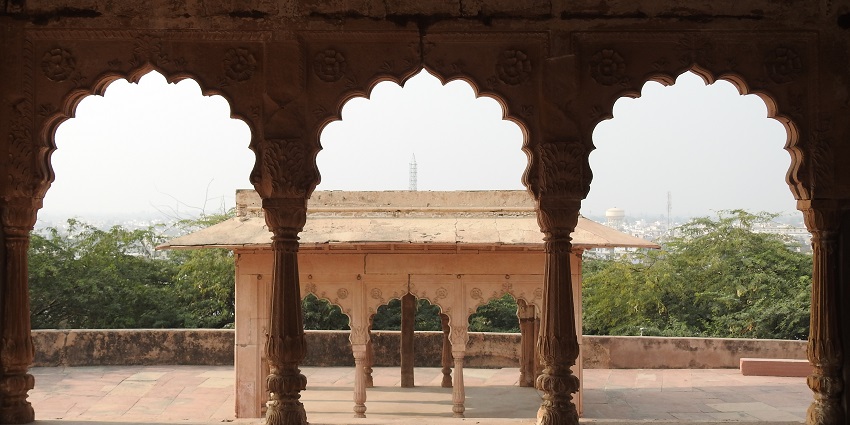
Photo: Dr. Raju Kasambe / Wikimedia Commons
Located in Bharatpur, just a short drive from the national park, Lohagarh Fort is an architectural marvel and a symbol of Rajasthan’s rich history. Constructed in the early 18th century by Maharaja Suraj Mal, the fort is renowned for its durability and has successfully resisted numerous assaults over the years. Surrounded by a moat, it houses several palaces, including Kothi Khas and Mahal Khas. The fort’s unique fusion of beauty and defensive design make it a must-visit for history enthusiasts exploring the region.
Timings: 10 AM – 6 PM
Entry Fee: ₹20 for Indians, ₹100 for foreign tourists
5. Deeg Palace
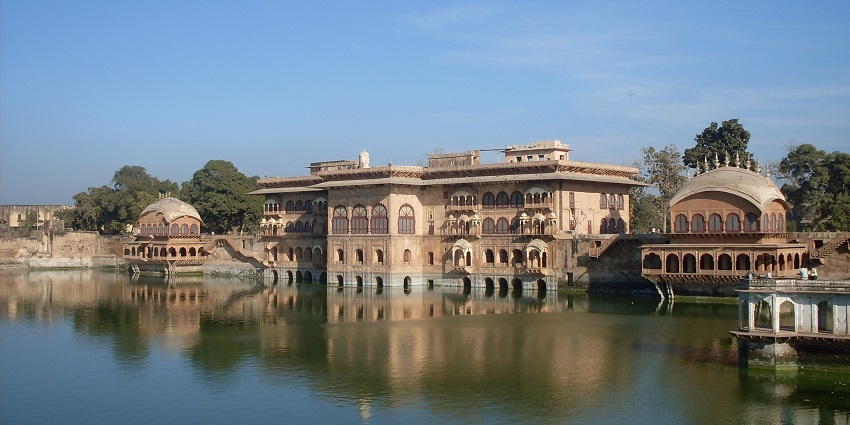
Photo: LRBurdak / Wikimedia Commons
Situated around 32 km from the national park, Deeg Palace is a stunning example of Rajput architecture, featuring beautiful gardens, fountains, and intricate palaces. Once a summer retreat for the rulers of Bharatpur, the palace complex showcases grand halls, vibrant courtyards, and famous water palaces designed to keep the interiors cool during scorching summers. Deeg Palace offers a peaceful retreat into Rajasthan’s royal past and is an excellent destination for those looking to combine cultural exploration with natural beauty.
Timings: 9 AM – 5 PM (except Fridays)
Entry Fee: ₹25 for Indian tourists, ₹100 for foreign tourists
Suggested Read: A Guide To The Bharatpur Museum
Where To Stay
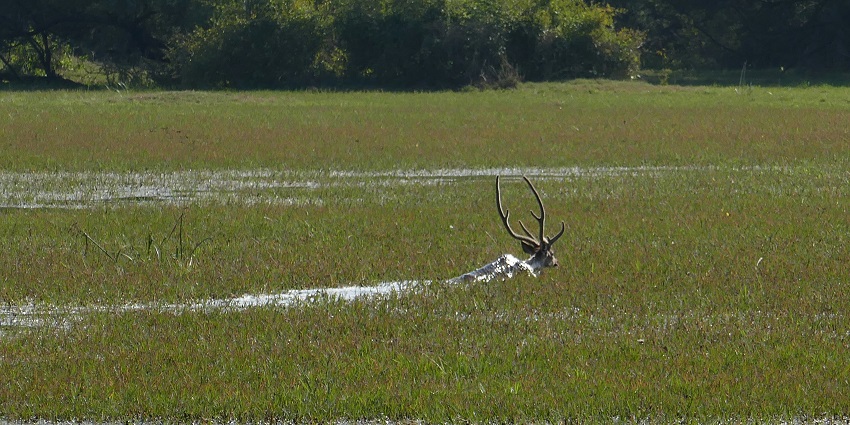
Photo: Ji-Elle / Wikimedia Commons
Bharatpur Wildlife Sanctuary, also known as Keoladeo National Park, offers a variety of accommodation options, ranging from budget guesthouses to luxury heritage hotels. Bharatpur Forest Lodge, located within the park, provides a rustic yet comfortable stay amidst nature. Near the park, Bharatpur offers numerous options, including Laxmi Vilas Palace and The Bagh Resort, both of which offer modern amenities with a touch of heritage charm.
Where To Eat
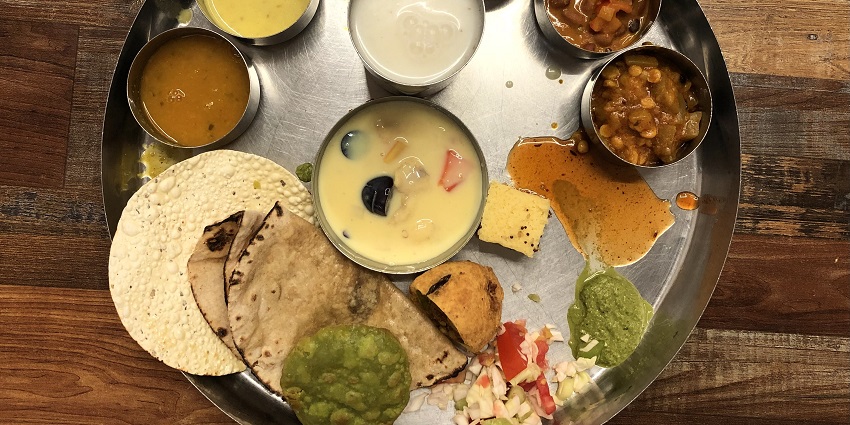
Photo: Picofolkujur / Wikimedia Commons
Within the park, there are limited dining options, with most visitors relying on snacks they bring or meals served at their accommodations. However, nearby Bharatpur city offers a variety of dining options. Popular restaurants include Surahi Restaurant, known for its North Indian cuisine, and The Birder’s Inn, which caters to both Indian and international tastes. Street food stalls offering local delicacies can also be found around the park entrance.
Suggested Read: The Best Foods In Rajasthan
Best Time To Visit Keoladeo National Park
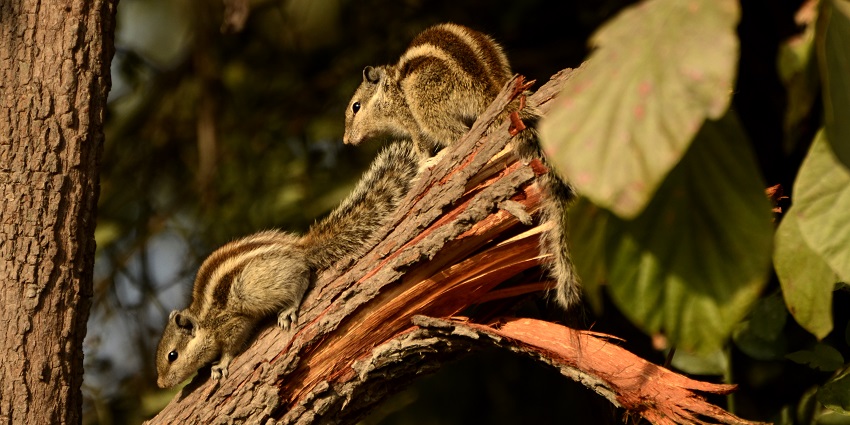
Photo: PJeganathan / Wikimedia Commons
The ideal time to visit Keoladeo National Park Rajasthan is from October to March, when the winter season attracts numerous migratory birds to the sanctuary. This period is ideal for birdwatching as many rare species, including the Siberian crane, can be spotted. The cooler temperatures also make outdoor activities like cycling and walking more comfortable. Summers can be hot and dry, with fewer birds present due to the seasonal migration patterns.
Other Factors To Consider
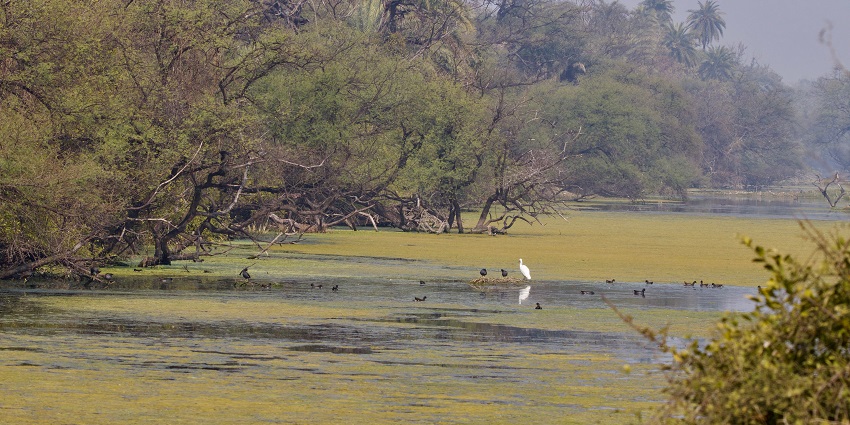
Photo: Nagarjun / Wikimedia Commons
Average Cost Of The Trip
An average trip cost to the national park, including accommodation, Keoladeo National Park entry fees, and safari expenses, can range between ₹6,000 and ₹12,000 per person for a 2-3 day stay. Budget travellers can opt for more affordable guesthouses and skip premium guided tours, bringing costs down to around ₹4,000 per person. On the other hand, those looking for a luxurious experience can stay in upscale hotels and book private safaris, which could raise the overall cost to ₹15,000 or more.
Tips For Travellers
- Ensure you book your safaris early, especially during peak season, as slots tend to fill quickly.
- Essential for birdwatching, binoculars will enhance your experience and help you spot rare species.
- Light, neutral-coloured clothing is recommended to blend in with the natural surroundings.
- Avoid making loud noises or disturbing animals during your visit. Keep a safe distance from all wildlife.
- Carry water bottles with you as you may need them during your birdwatching tours, especially in the warm sun.
Suggested Read: National Parks In Rajasthan
Keoladeo National Park is a haven for wildlife enthusiasts and bird lovers, offering a unique blend of natural beauty and biodiversity. From its rich wetlands to the rare species it shelters, the park promises an unforgettable experience. Are you ready to explore this UNESCO World Heritage Site? Book your wildlife adventure now with TripXL for a seamless and memorable journey!
Cover Photo: Nikhilchandra81 / Wikimedia Commons


 WhatsApp
WhatsApp
 Twitter
Twitter









